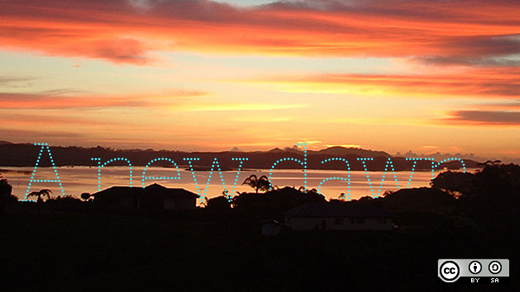In my recent interview with Brent Turner, from the California Association of Voting Officials (CAVO), we heard about the public interest case for making voting machines open source. In this article, I further explore the unfortunate trend for vendors in this space to "openwash" their offerings; that is, to misrepresent proprietary products as if they were open source, with the intent of making them more appealing.

In our last conversation, I was surprised to learn that there are no open source voting systems in use in California. Could you expand on the current market landscape for voting systems? How big is the market and how it is partitioned across vendors?
The current voting system market is broken to the extent there are just a few vendors in the United States:
- Election System & Software (ES&S)
- Hart InterCivic
- Dominion Voting Systems (Premier Election Systems / Sequoia Voting Systems)
The Department of Justice has enforced anti-trust laws against the biggest vendor, ES&S, forcing them to divest in an attempt to address the issue. The companies have a lock-in on the jurisdictions and tend to price gouge. The last round of jurisdictions utilized Federal monies from the Help America Vote Act, which was approximately 4.5 billion USD in sales. There are other smaller vendors, but they don't have much market share. The executive background of some of these vendors is another issue for consideration.
The lack of competition has been exacerbated by the poor design and manufacturing. California's "Top to Bottom Review" gives good insight regarding the security flaws. All government tests of the current systems have been scathing and have concluded the systems as unacceptably deficient.

What are the constraints and requirements that state officials are subject to when choosing voting systems? What laws jurisdiction apply in this space?
Currently, there is a patchwork quilt of laws and methods statewide and nationally. Uniformity is desired but there is much legislation that must occur. When the Secretaries of States and election directors give the green light for open source election systems to their counties, the natural market will occur. The California Association of Voting Officials is uniquely positioned as a hub to facilitate this occurrence and was created for that purpose. Many California counties have already expressed their interest for the cost savings and security benefits.
Now that SB-360 is a state law, California can "opt out" of the broken federal certification process. This removes the federal red tape and financial barriers. Though this law had the "open source" language removed and "non-proprietary" inserted, it still retained it's integrity enough to create a pathway for open source voting.
Tell us more about "openwashing," or making products appear open source even though they are not, in terms of voting systems. How common is it?
We have been excited to witness open source election system vendors enter the space, but we are also are mindful to monitor the standards. There is at least one company now announcing themselves as a General Public License (GPL) licensed voting system. Unfortunately, there are others attempting to pass themselves off as open source with nuanced licensing schemes. We recognize this as an attempt to sell code to the government via openwashing, and we have been quite aggressive in highlighting the differences between GPL, open source, and proprietary code.
The Open Source Initiative (OSI) has been a great resource here. Jurisdictions naturally lack the technical understanding necessary to understand the nuance utilized by some. But we have continued our education campaign, inoculating counties against "open-washers" has become part of our necessary routine in the fight for transparency.
After over a decade of effort, we had finally created "political will " and traction for adopting open source voting system. It has been after this effort, that we now see come into this space, a set of companies whose offerings sound and look like open source but are not necessarily so.
The publicly owned software code solution was already complex enough, and the "open-washers" added to the confusion and mis-direction. These companies are often rich in funding and also absorb grant monies, which allows them to be quite cozy with the status quo. The power of the "open-washers" is far reaching but can be curtailed through education of the government purchasers.
Is openwashing done through licenses that seem to be open source? Also, through marketing and advertising?
I believe it is a combination. The non-GPL license schemes have names that sound alike and confuse the jurisdictions. Open-washers have co-opted the term "open source" and buzz words like "transparency" and "publicly owned" so that jurisdictions must rely on technologists for clarity. For instance, there is an "open public" license that has now cropped up.
What are the opportunities for the general public to intervene and expose the practice of openwashing? Are these state decisions and deliberations held in the open? Can citizens raise objections?
Contact your Secretary of State, State Representative, Board of Supervisors, Registrar, and others, and request proper vote counting systems be certified and deployed. Let them know the people want GPL and open source election systems. Also, contact California Association of Voting Officials for further information regarding upcoming hearings and events.







4 Comments